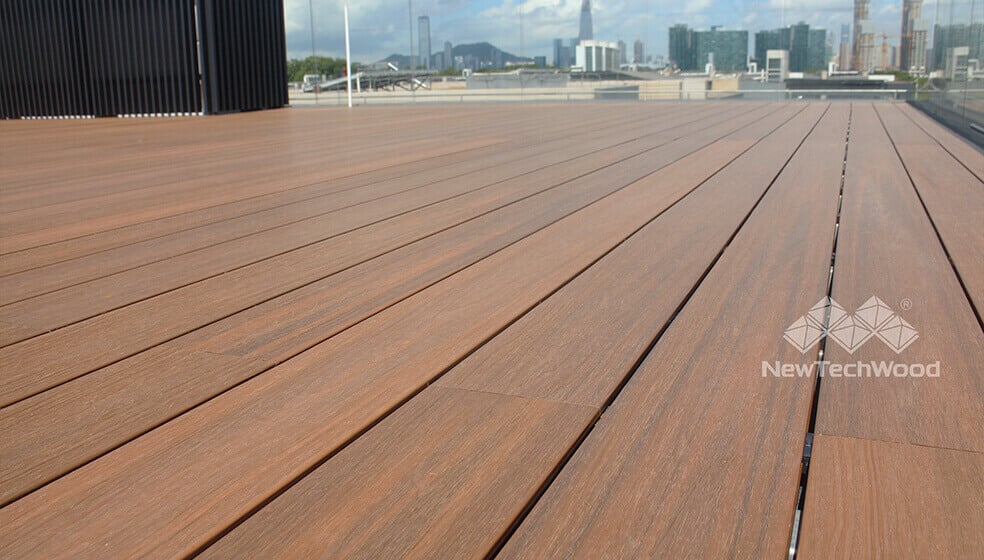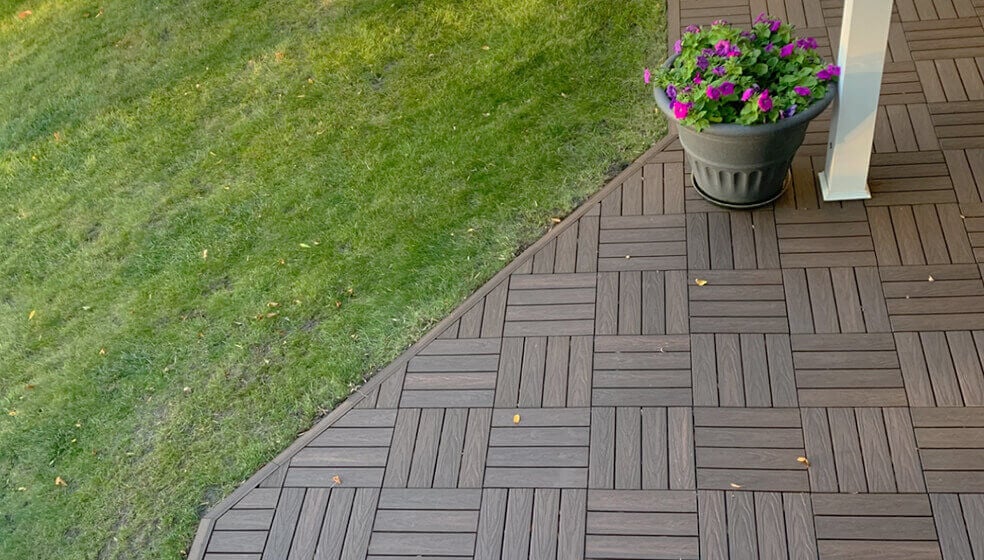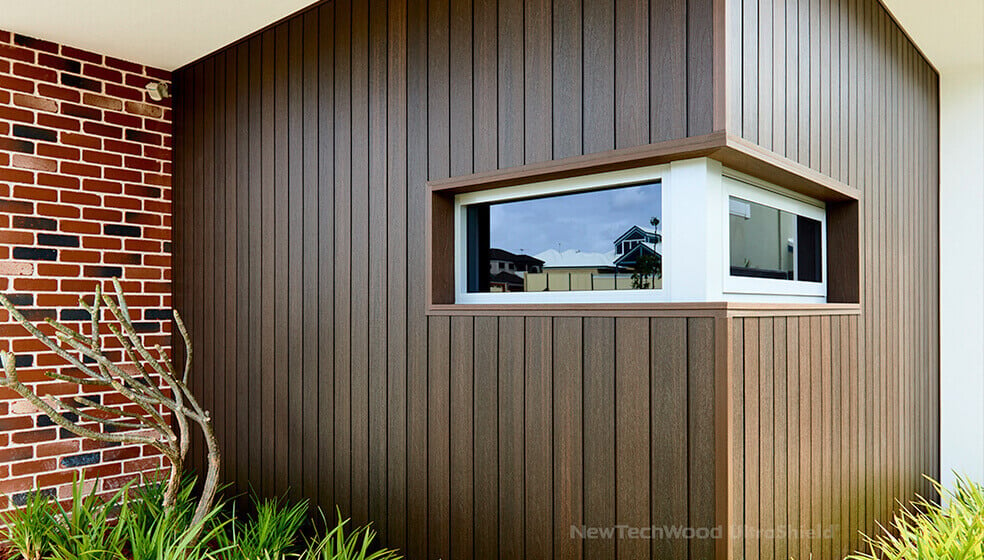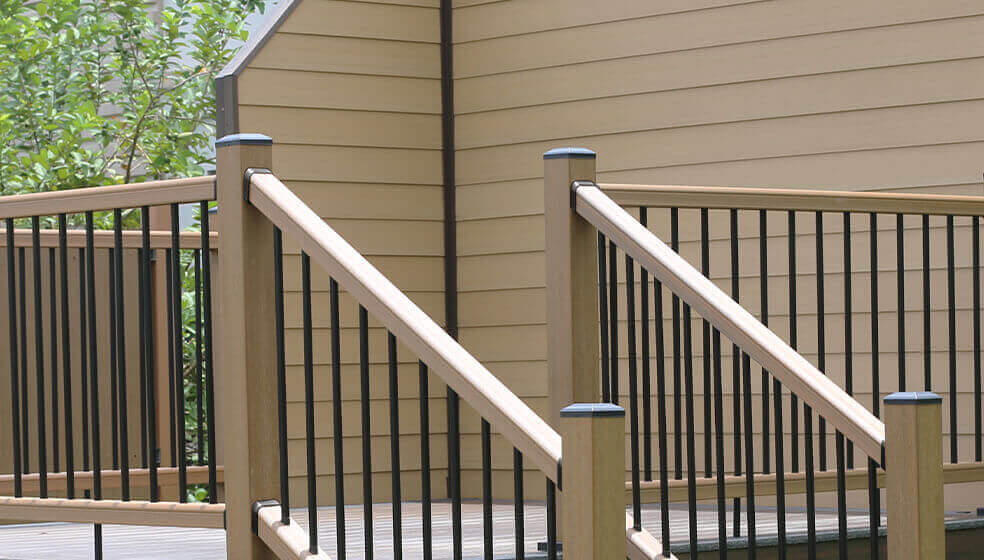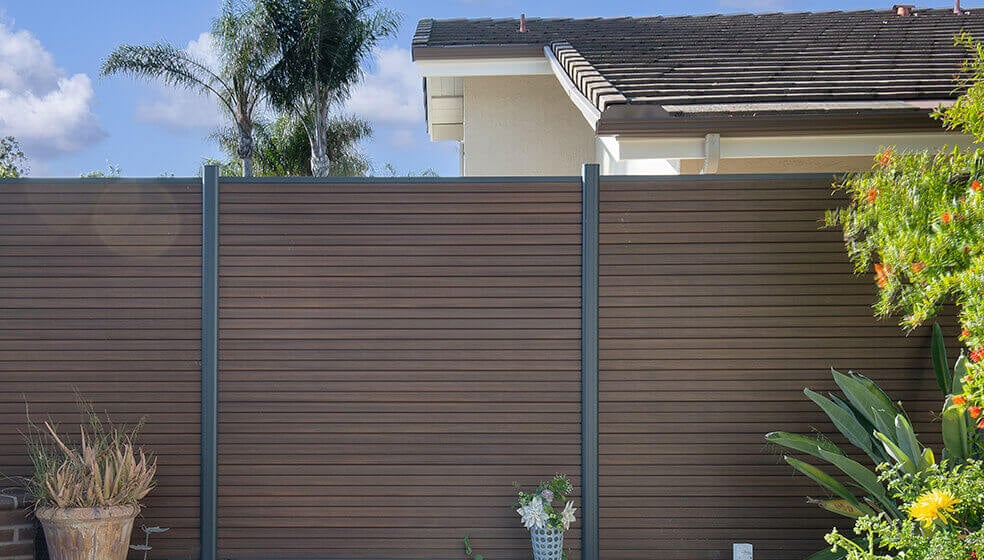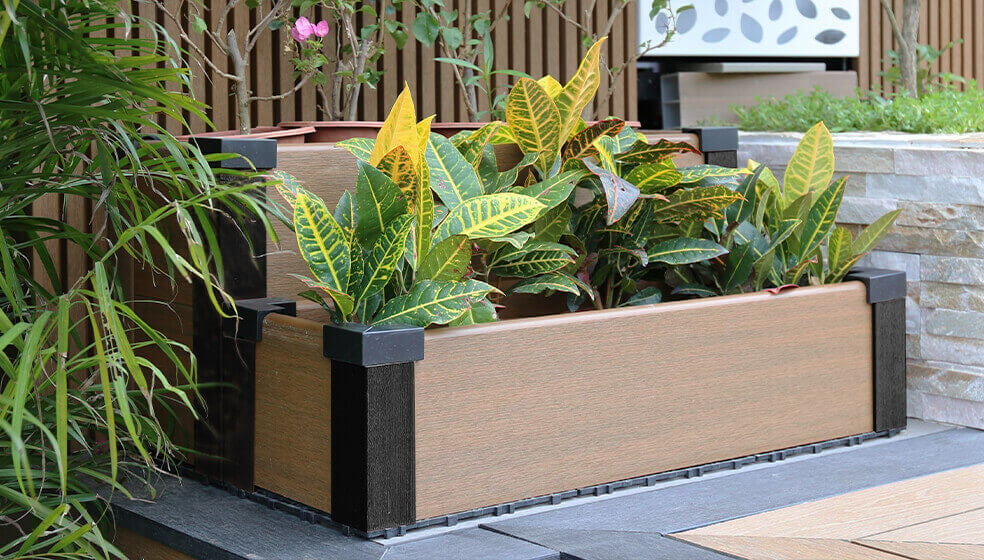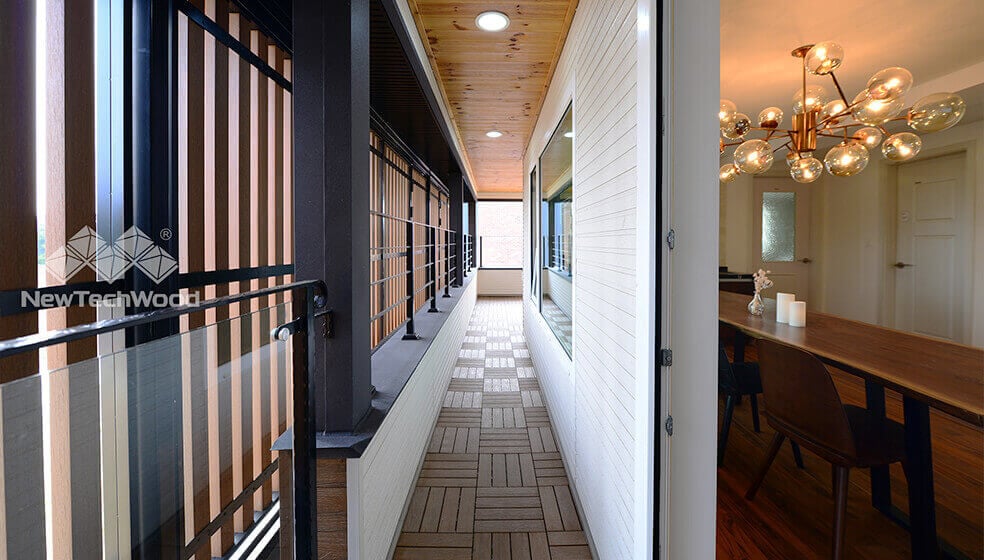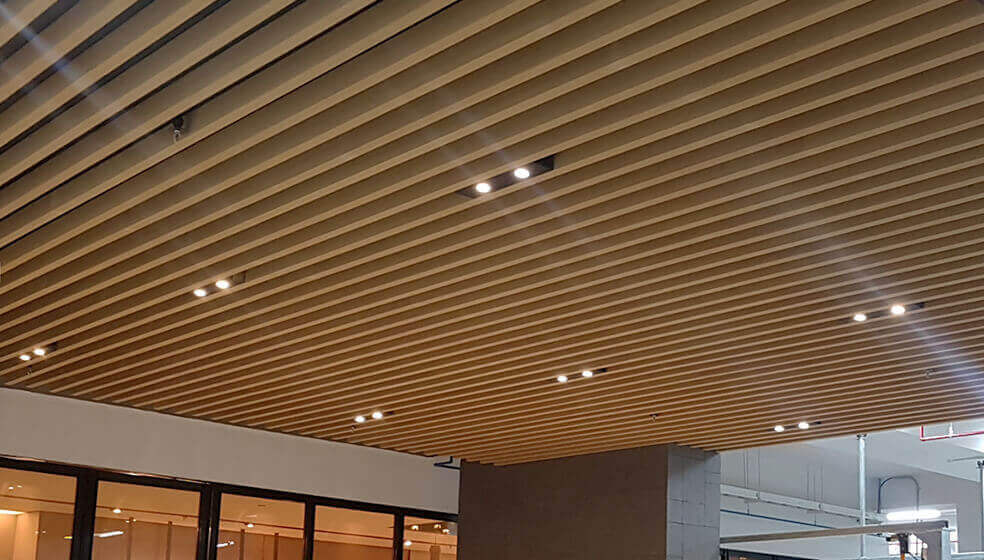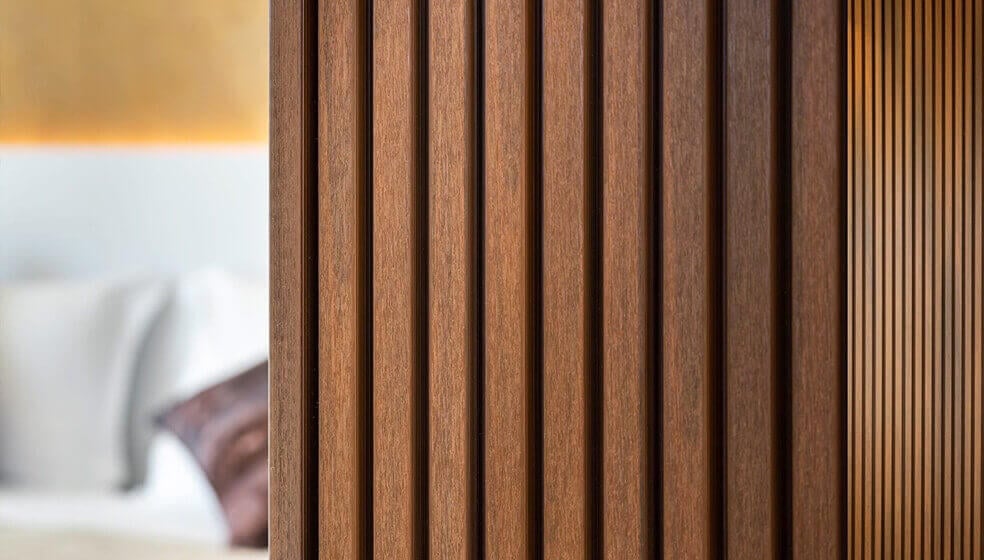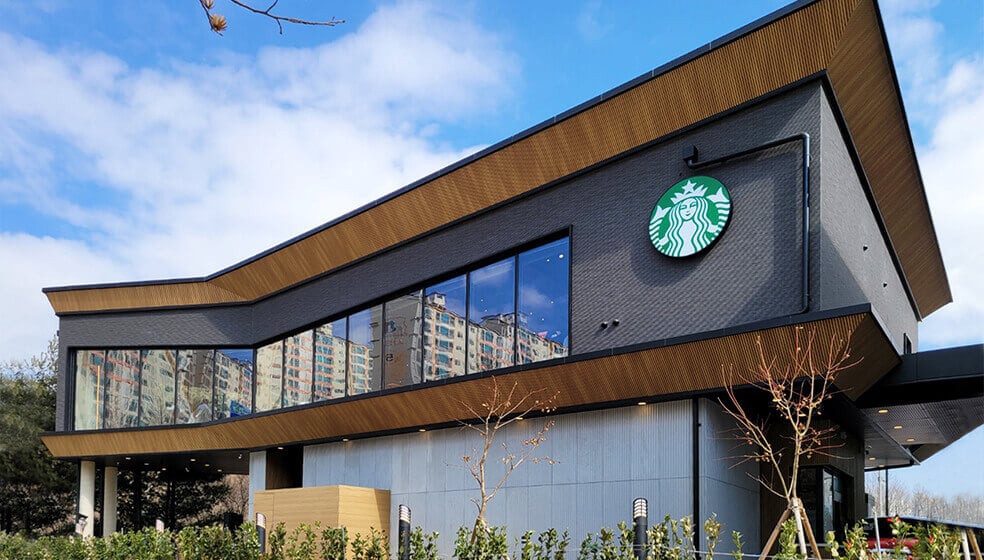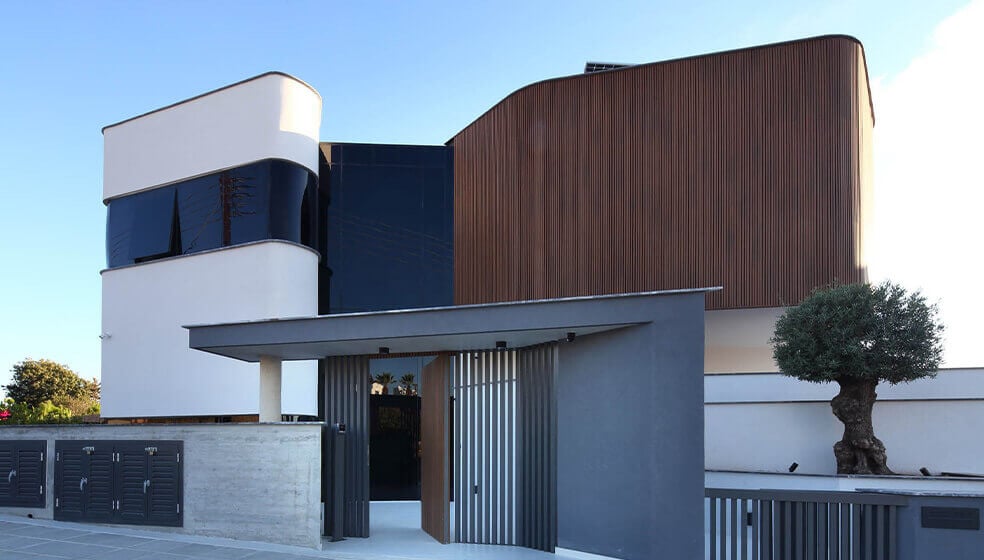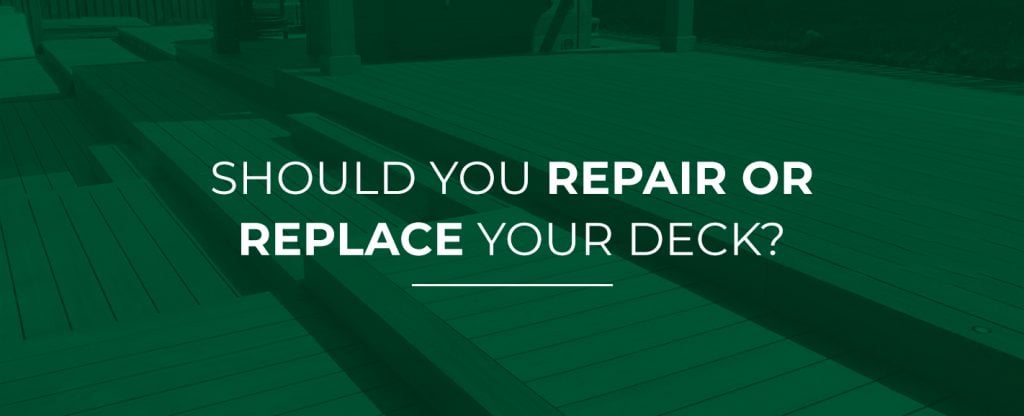
A deck provides a better quality of life in your backyard. You can host a family dinner, birthday party or barbecue in this outdoor living space. Furniture, plants and a grill can also enhance your property’s aesthetic appeal.
Due to weather conditions and wear and tear, your wooden deck may lose its color and quality over the years. Sometimes you can repair the boards and keep the original foundation, but you may need to consider completely replacing the outdoor area of your property. Use this guide to determine when it is time to get a new deck and explore your options for updated decking material.
What Is the Average Lifespan of a Deck?
A high-quality wooden platform can last several decades in your backyard, depending on your home’s climate and how well you maintain it. Consider these factors to figure out how long your deck will keep its stability.
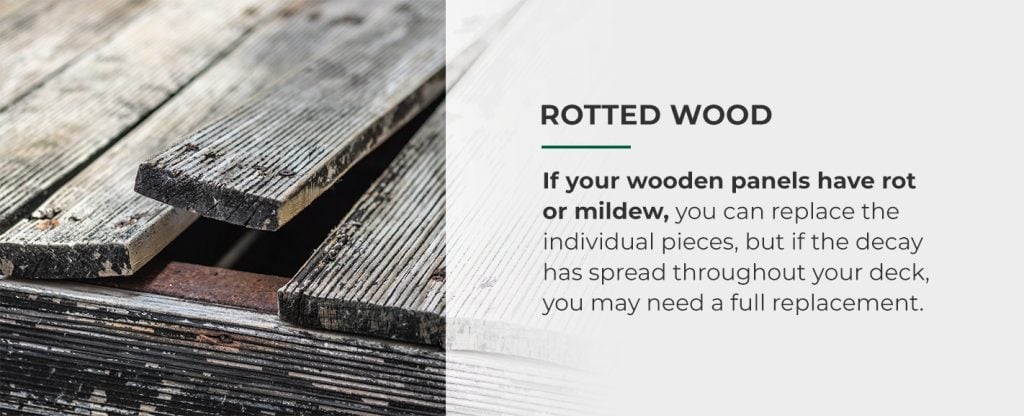
1. Proper Maintenance
Since wood is sensitive to rotting and discoloration, inspecting your outdoor living area at least once a year helps prevent these issues. You can maintain your wooden deck by:
- Protecting the deck boards: Every couple of years, you will need to stain and seal your outdoor living area with weatherproofing materials to prevent mildew. You should also wash it with a brush and mild detergent to remove debris from the framing and surfaces.
- Check under furniture and plants: Objects on your wood decking can trap water without you knowing. By moving the decor items on your deck after a rainstorm or a humid day, you can take care of moisture buildup to protect the wooden surface.
- Wiping up spills and stains: If you drop food on your wooden deck, you could attract termites and other wood-loving bugs. Getting rid of spills repels insects along with preventing mold. Keep a roll of paper towels on hand during your outdoor gatherings, and have your deck pressure washed at least once a year to clean stains.
2. The Quality of the Material Used
Wood is a sustainable, energy-efficient material, but some species more durable than others. Mahogany and oak are relatively long-lasting, and you can stain them to preserve their natural beauty. Manufactured wood is resistant to stains, splitting, mold and discoloration. You can choose a luxurious composite wood color for your outdoor living space without panting or sealing it.
Composite wood decking includes the following features that can extend the life of your outdoor living area at least another decade:
- Co-extruded cap: NewTechWood UltraShield® Technology provides a protective encasing around all four sides of the inner layer. This shield and core are molded together under very high temperatures so the panels are free from toxic adhesives or chemicals.
- Wood composite core: The durable and eco-friendly core of wood composite decking will ensure that your outdoor living area will last for several decades. The UltraShield® deck boards are under a 25-year warranty to provide reimbursement for any discolored or broken panels.
3. Installation Location and Method
Wood does well in areas that have moderate shade throughout the day. Excess UV damage can discolor the deck boards, while moisture can rot them. Inspect your deck for these common installation errors to figure out how long it will last:
- A short distance between the foundation and the ground: A wooden platform should be as far away from the ground as possible to avoid water seeping in from the soil. If your outdoor living area is too close to the ground, it will lack the proper ventilation to regulate airflow.
- Uneven foundation: Concrete is a sturdy surface that can hold up your wood decking, but if you install wood posts directly into the soil, the framing could rot and disintegrate.
- Improper water control: Ledger flashing prevents moisture from accumulating into the deck. A wood surface missing this essential piece can deteriorate in harsh weather conditions.
- Construction details: Your wooden deck has parts under the surface that keep it sturdy. The ledger board and the fasteners attach the wooden platform to your house, so if the contractor installed those pieces incorrectly, the framing could collapse.
When Should You Repair a Deck?
You could save money by simply repairing a damaged or worn-out part of the deck. If its structure is still intact, but there are major signs of wear and tear, consider repairing it. Here are five ways to determine when you should repair a deck.

1. Rotted Wood
Mold or rotting is common in wood, especially in moist climates. If your wooden panels have rot or mildew, you can replace the individual pieces, but if the decay has spread throughout your deck, you may need a full replacement.
Check the lumber grade of the wood posts to make sure you have a durable foundation. If your deck is made of cedar or redwood, you should replace it with wood composite. Pressure-treated or engineered wood that has maintained its integrity over the years may simply need to be driven further into the ground.
2. Your Railings Shake
While it’s not a major component of your deck’s structure, a shaky railing can be a hazard to your safety. Before you tighten the handrails by tightening the screws or replacing the nails, make sure there aren’t signs of damage in the rest of the deck. If you have problems with the foundation, you will need to invest in a new deck.
3. The Floorboards Are Loose
If the deck moves as you walk on it, you might be able to replace a few of the joists to restore its tight it a tight fit again. Replace boards using galvanized or stainless-steel screws before they harm the other parts of your deck. You need to replace the whole deck if the framing has lost its integrity.
4. Deck Boards Are Cracked
Replace any planks you notice are splitting or cracking. The boards fluctuate due to changes in the outdoor temperature, and over time, they dry out and split. While splinters could injure your bare feet and hands, they’re also a sign that your deck is losing its stability. If you notice that most of the boards have cracked, you should get the whole deck replaced.
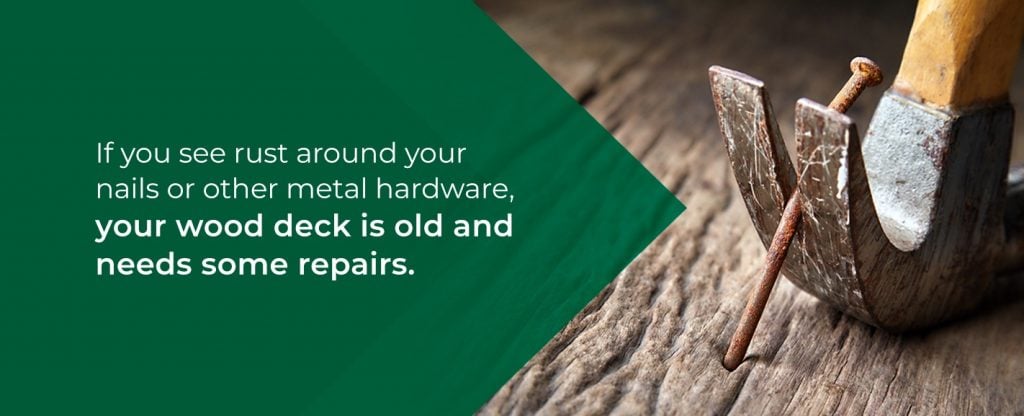
5. Rusted Nails and Hardware
If you see rust around your nails or other metal hardware, your wood deck is old and needs some repairs. Corrosion could weaken your deck’s structure, but they don’t indicate that you need to replace the whole outdoor living area. While this isn’t a reason to replace your entire decking, you should change out the rusty hardware so you won’t run into problems later.
6. Rotting Support Posts and Beams
Wood decks should be built on a sturdy surface like concrete because the moisture from the soil can ruin the deck’s posts. Your backyard addition may also have had sturdy support ports installed deep underground.
Examine your deck’s footings for signs of decay to determine whether you should repair or replace it. If the framing posts have elevated above grade, you may need to replace them and dig them further into the ground for firm support.
How Do You Know When to Replace Your Deck?
While you can make changes to your deck to preserve its appearance, you need to replace it if there are structural safety hazards. Invest in a new deck if the repair costs are the same as updating the whole thing. Here are some signs that it’s time to replace a deck.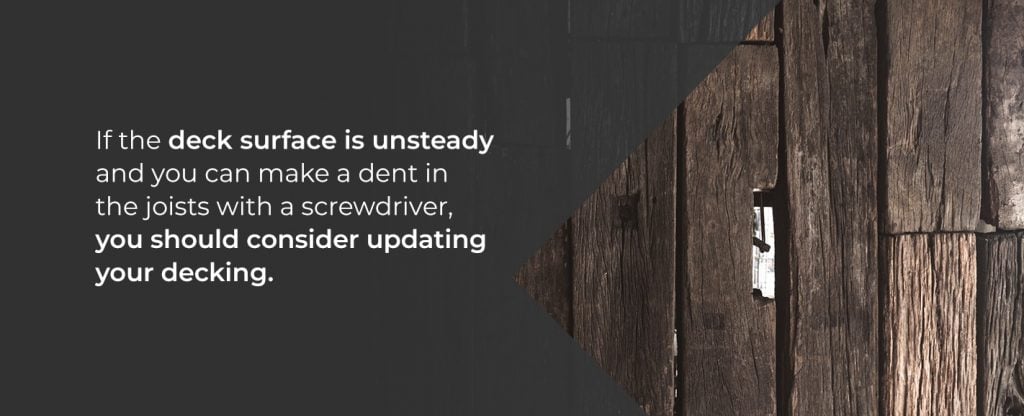
1. Joists and Beams Are Weak
The joists and beams hold up your outdoor living space and create a sturdy platform for your guests and your furniture. Check the bottom of your deck for signs of rotting or softening wood. You could also examine if the foundation has shifted. If the deck surface is unsteady and you can make a dent in the joists with a screwdriver, you should consider updating your decking.
2. Failing Ledger Boards
Failing ledger boards could allow moisture into your decking and separate it from the house. Examine the ledger boards for gaps between your home and the deck, and walk along the surface for warped or wobbly deck boards. You should install a new wooden platform as soon as possible to protect your living space from damage.
3. Lack of Ledger Flashing
Ledger flashing prevents water from getting between the house and the ledger, which attaches the deck to your home. Water buildup is one of the leading causes of deck deterioration. Inspect your outdoor living area for any signs of rotting or warping to determine if you need to replace the framing.
4. Erosion Around the Bottom of the Posts
The posts of newer decks are anchored deep in the ground and secured with concrete. However, excessive exposure to harsh weather conditions can destroy your deck’s structural integrity. If the concrete anchors that hold the posts are visible, or you see any signs of erosion, you need to replace them.
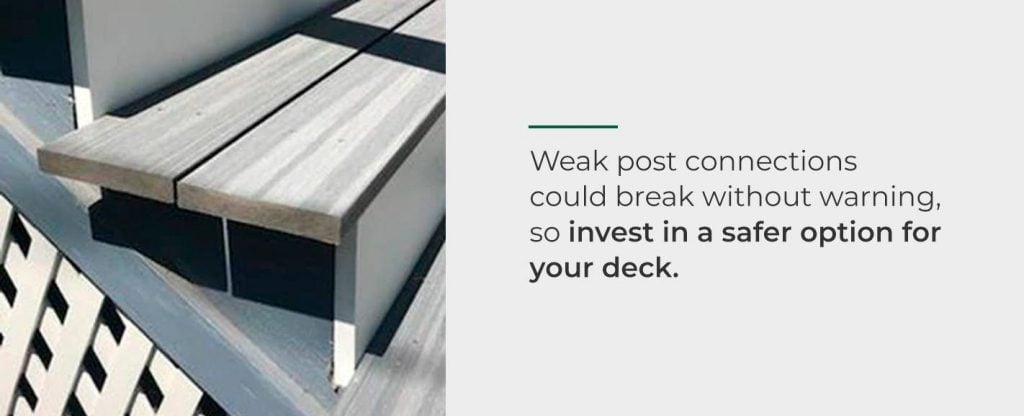
5. Weak Post Connections
Deck posts should be underneath the rim joists or beams for a sound structure, but they could rot due to exposure to the elements. Inspect your posts often to ensure there is no rot and the fasteners are in the right place.
Weak post connections could break without warning, so invest in a safer option for your deck. You can replace the posts, but if your foundation has shifted or your posts were installed incorrectly, you likely need to replace the whole deck.
6. Your Deck Needs to Follow Local Building Regulations
The standards for constructing a deck have changed over the years to promote the safety and well-being of your family, guests and property. If your outdoor living area is several decades old, it’s likely not up to code anymore. Depending on where you live, you may not have to replace the whole platform right away, but you should have it inspected to find out what you will need to update.
When Should You Replace a Deck Surface?
If your outdoor living space needs a new look, you could replace the deck platform and leave the foundation alone. You can change out the decking without updating the framing if it meets the following criteria.
1. The Deck Has a Sturdy Foundation
If the wood panels of your deck are splintering or cracking, but the structure underneath is secure, you can simply replace the deck boards. You could determine the strength of your deck’s framing by inspecting the joists and beams and walking along the surface.
Switch out the wood panels for new ones if the joists and beams are free from rot and damage and if the surface is steady when you walk on it. Take out the cracked boards of wood and replace them. If you need to replace most or all of the planks, consider a more durable material like engineered wood.
2. You Want a New Look for Your Worn-Out Wood Panels
Over time, the wood boards on your deck may lose their color, even if the structure is still sound. Loose and warped panels develop from extreme weather conditions, the use of vulnerable natural wood or the lack of maintenance. You can replace the walking surfaces and deck railings with a new, reliable material to save money and give your deck an updated appearance.
3. You Have Limited Resources
To replace your whole deck, you need to remove the old foundation and posts. When it’s time to install the new deck, you may realize you don’t have enough time, money or energy for the project. As a result, the holes or bare concrete slab could be a threat to your family’s safety. Instead, before you replace the whole system, change out the platform if you want to save time and money.

4. The Deck Has Useable Parts
If you’re hesitant to pay for a brand-new deck, you can work with a professional to save as much of your existing structure as possible. After running tests to determine the sturdiness of your posts, joists and beams, they can give you an estimate of how much the new parts would cost and what they recommend replacing.
When Is It Time to Replace a Deck and the Framing?
It’s time to replace the framing along with a deck if you have issues with the foundation. Check your outdoor living space for signs of deterioration to find out if you need to invest in a completely new deck.
1. The Framing Isn’t Structurally Sound
Replace the shaky old wood deck with sturdy composite decking if the joists and supports have lost their integrity. If you only switch out the surface, you will have to replace the foundation eventually. Replace it all at once to save time and money in the long run.
2. The Foundation Doesn’t Comply With Building Standards
A leaning deck is inconvenient, but it’s also a threat to your safety and a potential lawsuit if someone gets hurt on your property. As a result, many municipalities have tightened their deck construction standards to follow local building laws for permits. If you have an old decking system, it might be best to redo the entire foundation instead of assuming that it’s up to code.
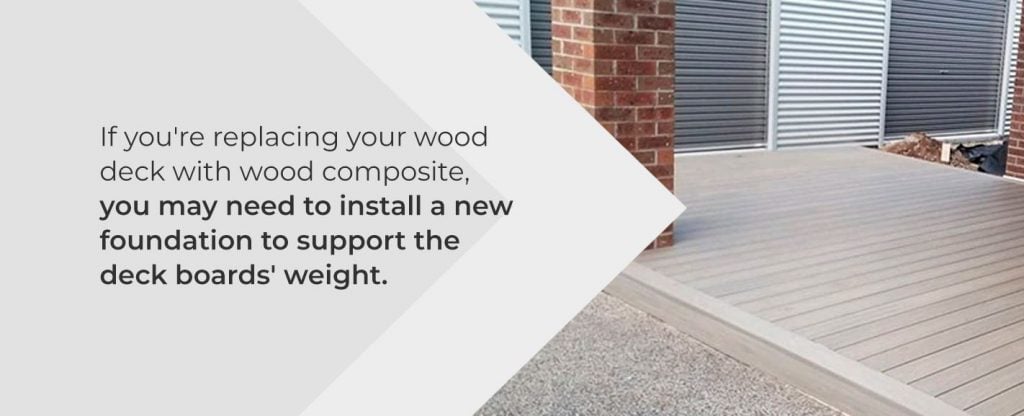
3. You Want to Change the Deck’s Material or Design
The structure of your outdoor living space needs to hold up the surface’s material. If you’re replacing your wood deck with wood composite, you may need to install a new foundation to support the deck boards’ weight. You will also need to redesign the framing if you want to change the shape of your deck or extend it farther into the yard.
4. The Wood Planks Are Rotted or Worn-Out
Unless you’ve replaced the decking once already, your deck’s surface is likely the same age as the foundation. If you’re considering just replacing the wood panels, keep in mind that you may need to change the whole system in the next couple of years. Instead of replacing the surface now only to remove it and replace it all later, get the most out of your deck by investing in a completely updated outdoor living space and replacing both all at once.
Can I Replace My Wood Deck With Composite?
Yes, wood composite is an excellent replacement for your wooden deck. This material is lighter and more durable than natural wood. Here are some of the benefits of using wood composite for your siding.
1. Eco-Friendly
Natural wood is one of the most ecological materials for your home because it’s all-natural and bio-degradable. Instead of cutting down a new tree to make wooden decking, engineered wood contains recycled fibers of this bio-degradable material. Manufacturers of wood composite consider the well-being of the environment, promote the health and safety of people and develop the global economy.
Composite wood panels contain 95% recycled materials, such as reclaimed wood fibers and plastic bottles. During the engineering process of wood composite, manufacturers produce less waste, conserve energy and save time. A yearly third-party audit ensures that the companies producing wood composite comply with health, safety and environmental guidelines.
2. Easy to Install
If you need a new deck, you should find a material that’s low-maintenance and simple to put together. NewTechWood composite wood deck tiles snap together like puzzle pieces, and you can choose their design and pattern as you install them.
The decking finishers of your wood composite panels give you everything you need to make your deck replacement go smoothly. Deck fascia boards hide the joists underneath and create a border for the deck below the surface. Self-adhesive, waterproof joist tape and end caps protect the beams and boards from moisture damage. The kit also includes a wax pen that mends scratches in your natural wood or composite boards.

3. Versatile Design
Classic wood composite deck boards come with a variety of color options and additions. You can use these boards to install a new deck or stairs for a clean, modern appearance. After choosing a composite deck color, you can adorn your deck with these decorations:
- Garden planter kit: A composite wood planter box snaps in place with your deck tiles so that you can apply them anywhere you want in your backyard. You could make a sandbox for the kids, or you could fill it with soil and make a mini composite garden. Insert the planter as part of your deck, or surround it with synthetic grass or stone.
- Garden Feeder: Wood composite bird feeders are more durable than wood and more eco-friendly than plastic tubes. These delightful additions to your house are resistant to harsh weather conditions, so you can leave them outside all year long.
4. Low-Maintenance
This eco-friendly material is resistant to bending, cracking, warping or splitting, so you don’t have to seal or stain your deck repeatedly. The interlocking system of these tiles also permits the proper drainage of water for a healthy, long-lasting surface, and stainless steel screws guard against corrosion.
Along with panels and tiles, composite wood deck railings are resistant to splintering, so you can safely use them as you climb the stairs. Instead of staining or finishing them, they only require washing with a hose and brush to preserve their quality.
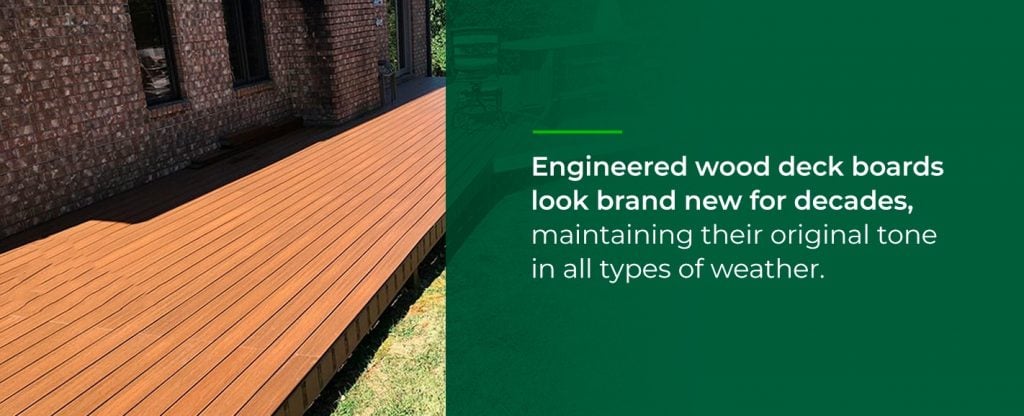
5. Durable
While the average lifespan of a wood deck is several decades, wood composite can last even longer. Composite wood decking is free from these common problems that natural wood experiences over time:
- Discoloration: Wood panels lose their color due to excessive exposure to UV rays and moisture. You could tell the age of wood by its outdated, worn-out color. Engineered wood deck boards look brand new for decades, maintaining their original tone in all types of weather.
- Splintering: With wood composite decks, your hands and feet are safe from splinters. Unlike wood boards that crack after a decade, wood composite keeps its integrity because of its durable plastic fibers.
- Rot and mold: Excess water on wood decks could result in the buildup of mold and rotting on the boards. Since wood composite is resistant to moisture, you won’t find mold or mildew in your new outdoor living area.
How Do You Replace an Old Deck With Composite Decking?
While you can hire a professional, replacing an old wooden deck with composite is relatively easy. Make sure you’ve received the decking panels or tiles and the finishing materials before you begin. You also should have these materials on hand to help you during the installation:
- Chalk
- Gloves
- Tape measure
- Rubber mallet
- Respiratory protection
- Long sleeves
- Safety glasses
The method you use to install your wood composite deck depends on the foundation. You may also need to build the stairs and the railing as required. Follow these steps to ensure a seamless replacement of your outdoor living area.
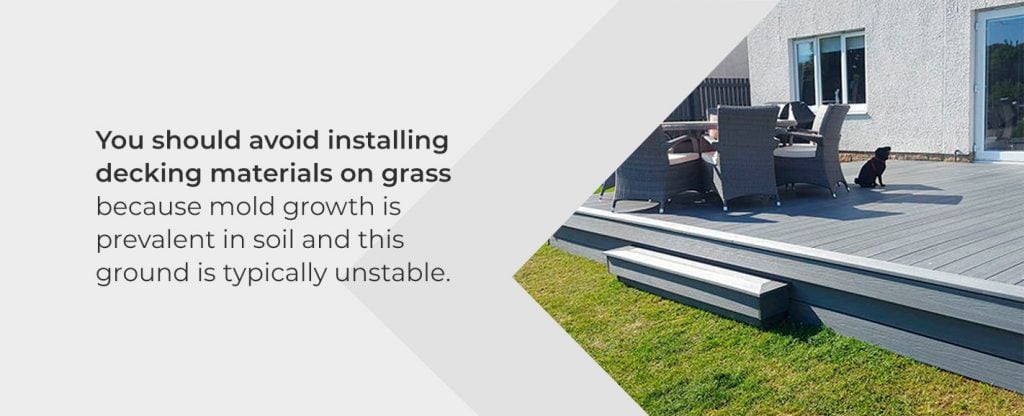
1. Creating a Sturdy Foundation for Your Deck
You should avoid installing decking materials on grass because mold growth is prevalent in soil and this ground is typically unstable. Instead, consider the following criteria to develop the right foundation for this outdoor living space:
- Dry areas: As you survey your yard, try installing your deck in an area with enough sunlight. Overly wet areas, especially spots with standing water or depressed elevation, can damage the foundation of your wood composite deck.
- Vacant spaces: Tree roots can extend at least several feet beyond the trunk. Keep the foundation of your deck away from tree roots that could potentially damage your wood composite deck.
- Level ground: The surface where you choose to lay your deck should be level to support the deck boards properly. Create a level space for your wooden platform by digging and tilling the ground before laying down a concrete foundation.
- Firm base: Once you level the surface, you can create a sturdy base from concrete, gravel or tightly compacted sand. Remove all the furniture and other objects from your backyard before installing decking on your existing concrete patio. Pressure wash the surface to get rid of all dirt and debris and let it dry.
- Proper ventilation: If you’re using wood composite decking, you should have adequate airflow beneath the tiles. Provide at least a 40-millimeter clearance between the decking and the concrete.
Before installing decking onto a brand-new deck, follow these guidelines for establishing a secure foundation and installing each section of your deck:
- Creating the caissons: To develop watertight chambers for your foundation, dig the holes and pour concrete into them. Wait a day for the concrete to cure before you continue.
- Installing a ledger board and beams: Using a level, connect the ledger board to the house. Attach the post anchors on the caissons and posts onto the anchors. Put together the center beam and the post hangers, along with an end beam.
- Attaching the joist hangers: Install joist hangers with the framing lumber every 6″ along the end beam and ledger board. Secure the joists in the racks with nails, periodically checking that the panels are level, plumb and square.
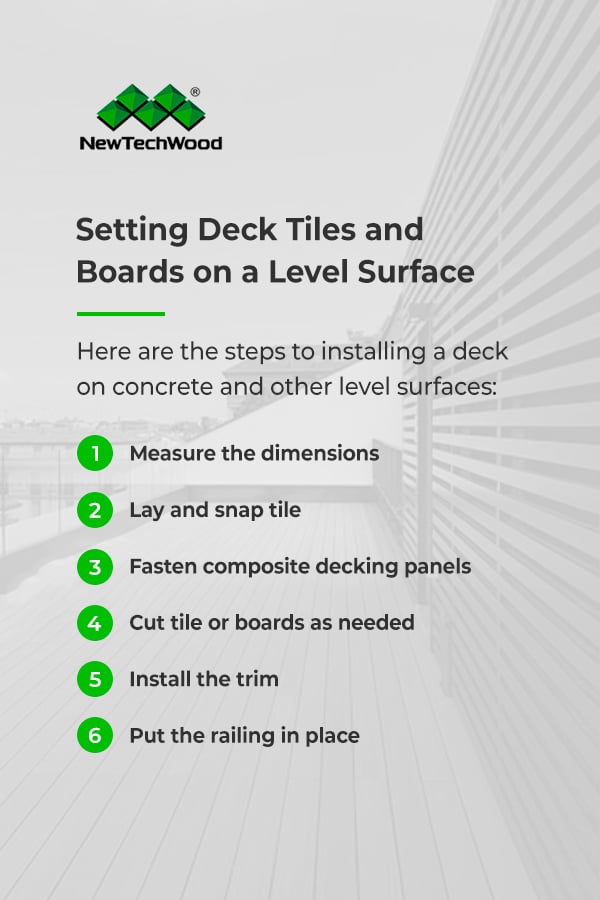
2. Setting Deck Tiles and Boards on a Level Surface
Concrete patios are up to code and they’re a durable base for your wood composite tiles and planks. You could quickly install your composite wood deck and refresh your living space. Make sure your patio is flat and level before you begin.
Here are the steps to installing a deck on concrete and other level surfaces:
- Measure the dimensions: Figure out the length and width of the concrete to determine how many tiles or boards you should order. You may have to cut the composite pieces to fit over uneven spaces or around obstructions. Consider ordering a few more than you need in case of accidental damage during the installation process.
- Lay and snap tile: Wood composite tiles and panels don’t need to acclimate to the environment like natural wood. Work from the outside border of your deck and move inward toward the center. Snap the tile pieces together like a puzzle with your hands, or you can use a rubber mallet for better support on your back.
- Fasten composite decking panels: If you’re using boards instead of deck tiles, you can connect them with hidden fastening systems. The T-Clip hidden fastener system provides about 1/4″ between the boards, while the Mini Gap system gives a 1/16″ space. If you choose to install composite decking with screws, fasten two screws in every joist, keeping them at least 1.5″ from the edge.
- Cut tile or boards as needed: If you have uneven spaces or obstructions on your concrete surface, cut the tiles for the proper fit. Mark the piece where you need to cut with white chalk and use a saw to cut along the line. Sand the cut side for a smooth surface.
- Install the trim: Trim gives your outdoor living area a finishing touch and prevents tripping over the edge. Install trim for the straight sections, as well as for the outside and inside corners. Complement the rest of your decking with the right color for your trim.
- Put the railing in place: To set up the handrails, mark the spaces where you’ll place each post. Cut and install the posts on a level surface, and put the sleeve on top of the mount. After drilling holes for the post brackets, cut the rail and screw on the post caps when all the brackets are in place.
How Much Does It Cost to Replace a Wood Deck With Composite?
The price of installing a brand-new wood composite deck is affordable because of its availability and ease of installation. You can accommodate your budget by considering these factors that affect the cost to replace a wood deck with composite.
1. The Size of Your Deck
Before you look for quotes or buy your supplies, you need to consider how much space you need for your deck. Most decking is sold per square foot, so determine how big your deck is to estimate the cost. The size of this space determines how much material you need and how long the project will take, which both factor into the price.
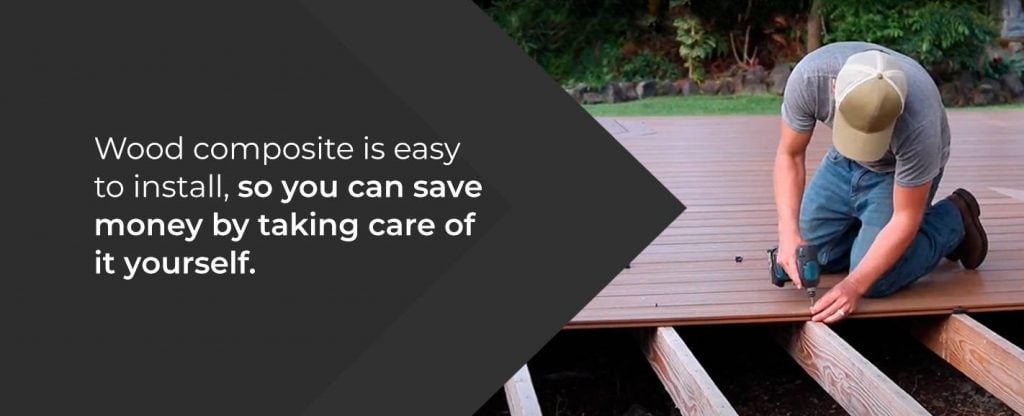
2. Labor Costs
If you’re going to build a brand-new deck, you may want to hire a contractor to tear away the old surface. This process includes pulling out the old joists and beams and hauling away the waste. Whether you decide to remove your old deck yourself or outsource, you should consult a local contractor to determine if the cost is worth it.
Contractors will usually include a labor fee along with the cost of the decking materials. Wood composite is easy to install, so you can save money by taking care of it yourself. If you need help replacing the surface, you can refer to the installation videos on our website to help you along the way.
3. Damage Repair
Wood composite decking is low-maintenance, so while you may have to pay a high upfront cost for a new deck, you will save money on repairs over time. Here are some of the replacements you would have to make in your natural wood paneling, from most expensive to least:
- Deck railing repairs: The cost of repairing the deck railing can cost anywhere from a few hundred dollars to several thousand dollars, depending on the wood species and the complexity of the project.
- Rot repairs: Replacing rotting panels of wood costs several hundred dollars, including materials and labor fees. You may discover that the source of the excess moisture is a more severe problem, like plumbing or draining issues, which will also cost money to fix.
- Anchoring deck stairs: If the wood panels are structurally sound, you can anchor loose steps for a few hundred dollars, based on the number of stairs.
- Mildew issues: To power wash your deck and remove mildew, a professional will typically charge a couple of hundred dollars, including a cleaning fee. You could rent a power washer for a fraction of that price per day.
- Pest control: As you inspect your natural wood decking, you may notice termites or other insects. You could hire a pest control specialist to inspect your wooden platform for less than a hundred dollars.
- Popped nails and screws: The cost to replace rusty or out of place hardware depends on the amount you need. Contractors will charge you a few cents for each screw or nail they would need to replace. If you take on this project yourself, you would only need to pay for the screws.
4. Maintenance
Since wood composite lasts longer than natural wood, you won’t have to spend as much money on repair costs. Natural wood needs to be sealed and stained at least once a year, which can cost a few thousand dollars if you have it done professionally. Have a professional inspect older decks.
You can seal wood composite to prevent scratches or minimal stains, but you will need to apply sealant a lot less often. Keep in mind that you will need to wash, sweep and clean it at least once a year and examine it for signs of damage.

Find the Best Decking Material With NewTechWood
At NewTechWood, we specialize in eco-friendly, low-maintenance composite decking materials. Our decking tiles and panels are easy to install by snapping them into place on a sunny afternoon. Our kits come with hidden fasteners and finishing products to protect your wooden surface from stains and scratches.
Browse through our selection of wood composite deck boards, tiles, railing and planter kits to find a new aesthetic for your outdoor living space. Contact us online or call 1-866-728-5273 for more information about replacing your old wooden deck with UltraShield® technology materials.



